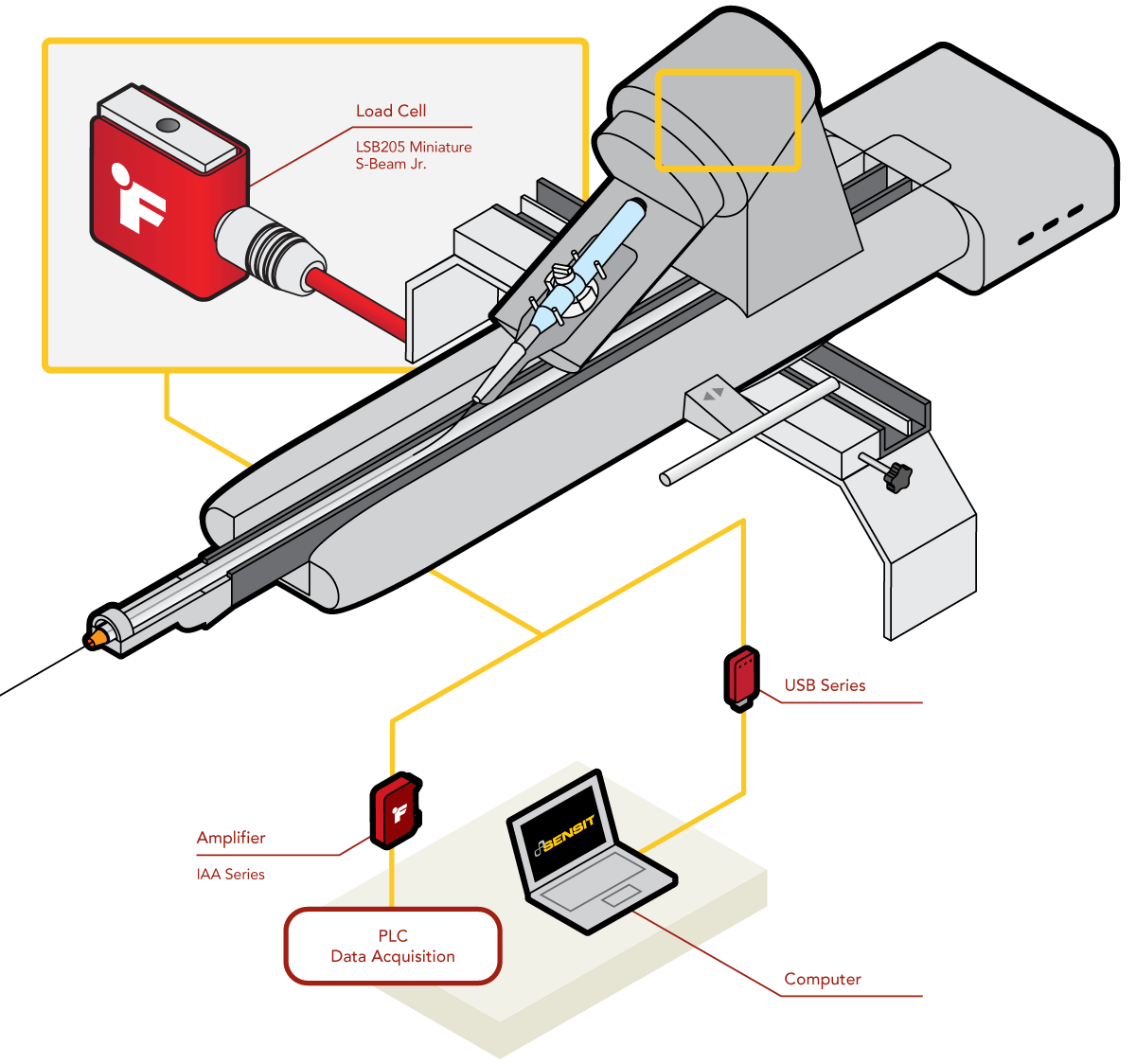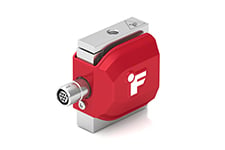Measuring Catheter Insertion Contact Forces in Intravascular Procedures
Precision Load Cells: Addressing the Challenge
FUTEK’s LSB206 Digital Miniature Load Cell addresses these challenges by providing highly accurate and sensitive force measurements in real time. This miniature load cell is ideal for integration into catheter insertion systems and offers a range of benefits, including:
- Embedded Digital Signal Conditioner: The LSB206 offers SPI and/or UART output, ensuring seamless digital communication with the catheter control system.
- High Sampling Rate and Resolution: With up to 1,300 samples per second and 15 Bits of Noise-Free Resolution (NFR), the load cell captures even the smallest force variations.
- Low Power Consumption: Operating at only 78mW, the LSB206 is energy efficient, making it ideal for use in battery-powered medical devices.
- Tension and Compression Measurement: With nonlinearity and hysteresis of ±0.1% of Rated Output, the load cell delivers reliable performance for both tension and compression forces.
- Compact and Lightweight: Weighing only 14 grams and measuring 0.75 inches in height and 0.38 inches in width, the LSB206 is designed to integrate easily into small, space-constrained systems.
- Integrated Overload Protection: The load cell is designed with overload protection of up to 1000% of its Rated Output.
Benefits of Precision Force Measurement
Incorporating precision load cells like the LSB206 into catheter insertion systems provides several key advantages:
- Optimized Force Control: Precision load cells ensure that the force applied during catheter insertion is carefully monitored and adjusted, improving procedural accuracy.
- Reduced Risk of Tissue Damage: Real-time force measurement helps prevent excessive force, reducing the risk of damage to delicate tissues.
- Improved Feedback in Robotic Systems: For robotic-assisted procedures, precision load cells provide critical force data that enhances the system’s control and responsiveness, compensating for the lack of direct tactile feedback.
How it Works
Catheter procedures demand the utmost precision and leave little margin for error.
Feedback provided by the LSB200 gives physicians the necessary force measurements to navigate the catheter safely.
In the above application, a Jr. Miniature S-Beam Load Cell (LSB200) is located on the guide wire extending from the robotic arm. The LSB200 measures tension on the wire and this information is used to control the direction and motion of the catheter.
Measurement feedback can be streamed through FUTEK’s USB Solutions to a central control system.
Products in Use
Jr. Miniature S-Beam Load Cell (LSB200) paired with Instrumentation (USB Solutions or IAA Series Analog Amplifier)
Contact Us
Please Contact Us with questions.
Measuring Catheter Insertion Contact Forces in Intravascular Procedures
Precision Load Cells: Addressing the Challenge
FUTEK’s LSB206 Digital Miniature Load Cell addresses these challenges by providing highly accurate and sensitive force measurements in real time. This miniature load cell is ideal for integration into catheter insertion systems and offers a range of benefits, including:
- Embedded Digital Signal Conditioner: The LSB206 offers SPI and/or UART output, ensuring seamless digital communication with the catheter control system.
- High Sampling Rate and Resolution: With up to 1,300 samples per second and 15 Bits of Noise-Free Resolution (NFR), the load cell captures even the smallest force variations.
- Low Power Consumption: Operating at only 78mW, the LSB206 is energy efficient, making it ideal for use in battery-powered medical devices.
- Tension and Compression Measurement: With nonlinearity and hysteresis of ±0.1% of Rated Output, the load cell delivers reliable performance for both tension and compression forces.
- Compact and Lightweight: Weighing only 14 grams and measuring 0.75 inches in height and 0.38 inches in width, the LSB206 is designed to integrate easily into small, space-constrained systems.
- Integrated Overload Protection: The load cell is designed with overload protection of up to 1000% of its Rated Output.
Benefits of Precision Force Measurement
Incorporating precision load cells like the LSB206 into catheter insertion systems provides several key advantages:
- Optimized Force Control: Precision load cells ensure that the force applied during catheter insertion is carefully monitored and adjusted, improving procedural accuracy.
- Reduced Risk of Tissue Damage: Real-time force measurement helps prevent excessive force, reducing the risk of damage to delicate tissues.
- Improved Feedback in Robotic Systems: For robotic-assisted procedures, precision load cells provide critical force data that enhances the system’s control and responsiveness, compensating for the lack of direct tactile feedback.

